
Santo António: A Tropical Gem in São Tomé and Príncipe
Discover Santo António in São Tomé and Príncipe: A blend of pristine beaches, lush rainforests, and rich cultural heritage on a tranquil island paradise.
Santo António, nestled on the lush island of Príncipe in São Tomé and Príncipe, is a haven for nature lovers and adventure seekers alike. This charming town is adorned with colonial architecture, vibrant markets, and friendly locals who welcome visitors with open arms. The city's serene atmosphere and stunning landscapes make it an idyllic escape from the hustle and bustle of modern life. Explore the pristine beaches that surround Santo António, where golden sands meet crystal-clear waters. The island's untouched beauty offers a perfect backdrop for snorkeling, diving, and fishing. Don't miss a visit to Banana Beach, one of the most picturesque spots on the island. For the more adventurous, hiking through the dense rainforests reveals breathtaking waterfalls and exotic wildlife. Immerse yourself in the local culture by visiting the Roça Sundy plantation, a historical site that offers insight into the island's colonial past. The nearby Obo National Park is a treasure trove of biodiversity, home to rare bird species and unique flora. End your day with a taste of local cuisine, featuring fresh seafood and tropical fruits, at one of the cozy restaurants in town.
Local tips in Santo Antonio
- Bring cash, as ATMs and card payment facilities are limited on the island.
- Hire a local guide for the best hiking and wildlife experiences.
- Pack light, breathable clothing suitable for the tropical climate.
- Visit between June and September for the best weather conditions.
- Respect local customs and traditions to ensure a warm welcome.
Santo António: A Tropical Gem in São Tomé and Príncipe
Santo António, nestled on the lush island of Príncipe in São Tomé and Príncipe, is a haven for nature lovers and adventure seekers alike. This charming town is adorned with colonial architecture, vibrant markets, and friendly locals who welcome visitors with open arms. The city's serene atmosphere and stunning landscapes make it an idyllic escape from the hustle and bustle of modern life. Explore the pristine beaches that surround Santo António, where golden sands meet crystal-clear waters. The island's untouched beauty offers a perfect backdrop for snorkeling, diving, and fishing. Don't miss a visit to Banana Beach, one of the most picturesque spots on the island. For the more adventurous, hiking through the dense rainforests reveals breathtaking waterfalls and exotic wildlife. Immerse yourself in the local culture by visiting the Roça Sundy plantation, a historical site that offers insight into the island's colonial past. The nearby Obo National Park is a treasure trove of biodiversity, home to rare bird species and unique flora. End your day with a taste of local cuisine, featuring fresh seafood and tropical fruits, at one of the cozy restaurants in town.
When is the best time to go to Santo Antonio?
Iconic landmarks you can’t miss
Club Santana
Discover the stunning beauty and luxury of Club Santana, a tropical resort hotel in São Tomé, perfect for relaxation and adventure.

Omali São Tomé
Discover the luxurious Omali São Tomé, a beachfront hotel offering stunning ocean views, exquisite dining, and a perfect blend of comfort and adventure.

Saint Nicholas Waterfall
Experience the natural beauty of Saint Nicholas Waterfall, a stunning tropical paradise on São Tomé, perfect for adventure seekers and nature lovers.

Equator Landmark
Experience the Equator Landmark in São Tomé and Príncipe: Stand on the equatorial line and embrace nature's beauty and rich cultural heritage.
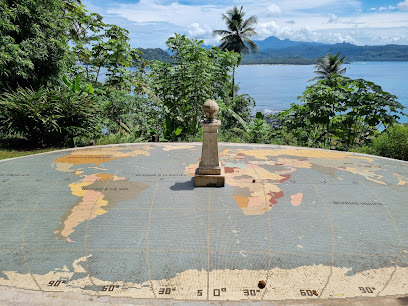
Sao Tome Island
Unveil the beauty of São Tomé Island, where lush landscapes meet vibrant culture and unforgettable adventures await every traveler.

Sundy Praia Príncipe Island
Discover the luxurious Sundy Praia on Príncipe Island, where stunning beaches and lush landscapes create a tropical paradise perfect for relaxation and adventure.

Belo Monte Hotel and Museum
Discover serenity at Belo Monte Hotel and Museum, where comfort meets cultural heritage in the heart of nature.

Hotel Roça Sundy
Discover the serene beauty of Príncipe Island at Hotel Roça Sundy, where history meets nature in a tranquil paradise.

Praia das Sete Ondas
Experience the pristine beauty and tranquil atmosphere of Praia das Sete Ondas, a must-visit beach destination for relaxation and adventure.

São Sebastião Museum
Explore the fascinating history and culture of São Tomé at the São Sebastião Museum, the island's premier national museum and tourist attraction.

Aeroporto Internacional de São Tomé e Príncipe
Discover the vibrant charm of São Tomé and Príncipe through its international airport, your gateway to lush landscapes and rich culture.

Roça Água-Izé
Explore the rich heritage of São Tomé at Roça Água-Izé, an enchanting open-air museum showcasing the island's colonial history and breathtaking landscapes.

Jaca Voyage - Agência de Viagem em São Tomé e Príncipe
Explore São Tomé and Príncipe with Jaca Voyage: Your expert travel agency for unforgettable adventures and personalized itineraries.

Eden Valley, Ecolodge and Farming
Experience the tranquility of Eden Valley Ecolodge, a sustainable retreat in Sao Tome offering eco-friendly accommodations and a true connection with nature.

Obo National Park
Discover the breathtaking landscapes and rich biodiversity of Obo National Park, a paradise for nature lovers and adventure seekers in São Tomé and Príncipe.

Essential places to dine
Pestana São Tomé
Experience luxury at Pestana São Tomé – where stunning ocean views meet vibrant nightlife in a tropical paradise.

Papa-Figo
Experience authentic São Toméan cuisine at Papa-Figo, where local flavors meet a welcoming atmosphere for every palate.
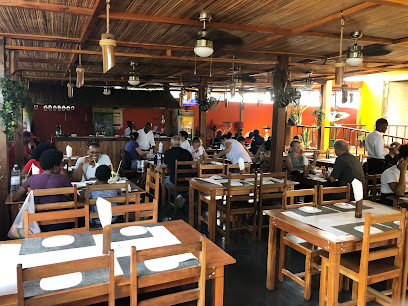
Casa Museu Almada Negreiros
Discover exquisite local cuisine at Casa Museu Almada Negreiros in São Tomé while immersing yourself in rich artistic heritage.

O Pirata
Experience authentic São Toméan cuisine at O Pirata, where fresh seafood meets vibrant ambiance in the heart of São Gabriel.
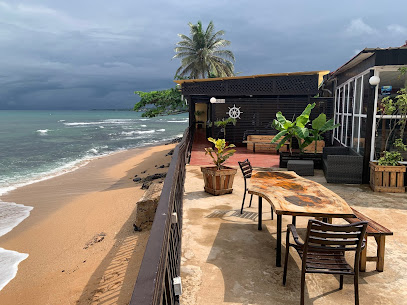
Dona Teté
Experience authentic Creole cuisine at Dona Teté in São Tomé—where local flavors meet vibrant culture.

Petisqueira Santola
Experience authentic São Toméan seafood at Petisqueira Santola – where fresh ingredients meet traditional recipes in Neves.

Miónga
Experience authentic São Tomé cuisine at Miónga – where every meal tells a story amidst warm hospitality.
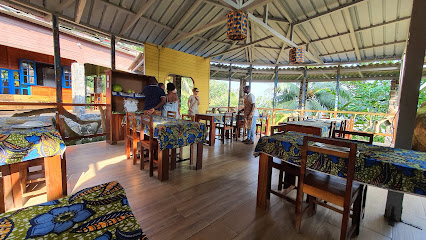
Monte Mar Restaurante São Tomé
Discover the culinary delights at Monte Mar Restaurante in São Tomé, where fresh seafood meets stunning ocean views for an unforgettable dining experience.

90 Graus Esplanada Bar
Savor authentic Italian pizzas at 90 Graus Esplanada Bar, where flavor meets friendly service in beautiful São Tomé.

Filomar
Experience the rich flavors of Creole cuisine at Filomar in São Tomé – where every dish tells a story.

CARAMBOLA
Experience authentic São Toméan cuisine at CARAMBOLA, where delicious flavors meet warm hospitality on Av. Kwame Nkruma.

Sabor da Ilha
Experience authentic Creole cuisine at Sabor da Ilha in São Tomé—where every dish reflects the vibrant culture and rich flavors of this beautiful island.

Beira Mar
Experience authentic local cuisine at Beira Mar in Santo Antonio – where every meal is a celebration of flavor and culture.

Casa Cantagalo Restaurante Leve Leve
Discover authentic São Tomé flavors at Casa Cantagalo Restaurante Leve Leve – perfect for families seeking delicious local cuisine.

Xquizeat
Experience the flavors of São Tomé at Xquizeat – a top-rated restaurant offering exquisite local cuisine in a charming setting.

Markets, malls and hidden boutiques
Mucumbli
Experience the warmth and charm of Mucumbli Hotel in Neves, a perfect retreat for travelers exploring the beauty of São Tomé and Príncipe.

Equator Landmark
Explore the Equator Landmark in Porto Alegre, where captivating nature meets rich historical significance at the heart of the equatorial line.

Belo Monte Hotel and Museum
Experience the serene beauty and cultural charm of Belo Monte at the Belo Monte Hotel and Museum, a perfect getaway for every traveler.

Hotel Roça Sundy
Discover the enchanting history and modern comforts of Hotel Roça Sundy in Sundi, a unique getaway in São Tomé and Príncipe.

Praia Lagarto
Experience the tranquil beauty of Praia Lagarto, a stunning beach in São Tomé, perfect for relaxation, swimming, and savoring local delicacies.

Residencial Apresentacao
Discover comfort and local charm at Residencial Apresentacao, your cozy retreat in the heart of Santo António, São Tomé and Príncipe.

Praia Burra
Discover the pristine beauty of Praia Burra, a hidden gem in São Tomé and Príncipe, perfect for sunbathing, swimming, and adventure.

Residencial Brigada
Experience the serene charm of Residencial Brigada - your perfect bed and breakfast getaway in beautiful Príncipe.

Youth Square
Experience the vibrant culture and rich history at Youth Square, São Tomé's essential landmark for tourists and locals alike.

Lusocash
Discover local flavors and essentials at Lusocash, the premier supermarket in Santo António, offering quality products for every traveler.

Ponto do sul
Discover the charm of local craftsmanship at Ponto do Sul, a unique gift shop offering authentic souvenirs and memorable treasures.
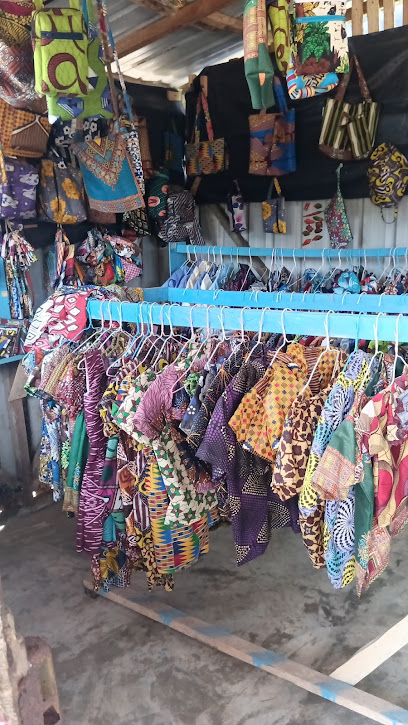
Correios
Discover the charm of Santo António at Correios, your essential post office for sending postcards and connecting with the local culture.

AUTENTIKA
Explore AUTENTIKA in São Tomé for unique local crafts and souvenirs, capturing the island's vibrant culture and artistry.

Barbearia Amaral
Discover the charm of Barbearia Amaral, a traditional barber shop in Santo António, where local culture and grooming meet.

Haja Vida
Explore Haja Vida, a charming boutique in Santo António offering unique handcrafted goods and local treasures that embody the spirit of the region.

Essential bars & hidden hideouts
Papa-Figo
Experience the authentic flavors of São Tomé at Papa-Figo, where local cuisine meets vibrant atmosphere for an unforgettable dining experience.

O Pirata
Discover the vibrant flavors of São Tomé at O Pirata, where fresh ingredients meet a lively atmosphere in a stunning setting.

Pico Mocambo
Experience the vibrant culture and refreshing drinks at Pico Mocambo, the ultimate bar in São Tomé for locals and tourists alike.

Roça Santo António Ecolodge
Experience the serene beauty of São Tomé at Roça Santo António Ecolodge, where nature meets local culture in perfect harmony.

Beira Mar
Discover Beira Mar, Santo Antonio's premier restaurant for fresh seafood and stunning ocean views, offering a delightful dining experience for all.

Vila Marilyn
Discover a cozy retreat at Vila Marilyn, the perfect guest house in São Tomé Island for an unforgettable island experience.

Rosa Pão
Discover the flavors of Santo António at Rosa Pão, where local cuisine meets warm hospitality in a charming dining atmosphere.

Mira Rio
Discover the savory delights and stunning riverside views at Mira Rio, a premier dining destination in Santo António.

Armazém
Discover the authentic flavors of Principe at Armazém, a top-rated restaurant in Santo António, offering a delightful dining experience.

ROMAR & Filhos LDA
Indulge in authentic local cuisine at ROMAR & Filhos LDA, a top dining destination in Santo Antonio, perfect for food lovers and cultural explorers.

Residencial Apresentacao
Stay in comfort at Residencial Apresentacao, a charming hotel in Santo António perfect for exploring the local culture and attractions.

Quiosque Vida Custa
Discover the authentic tastes of Santo António at Quiosque Vida Custa, where local cuisine meets a warm atmosphere for an unforgettable dining experience.

Passô Bar e Restaurante
Experience the vibrant flavors of São Tomé at Passô Bar e Restaurante, where local cuisine meets a lively atmosphere.

Quiosque Arranca Mandioca
Discover the vibrant atmosphere and local flavors at Quiosque Arranca Mandioca, the perfect bar for tourists in Santo António.

Santo António II
Experience the rich flavors of São Tomé and Portuguese cuisine at Santo António II, a culinary haven in the heart of Santo Antonio.

Local Phrases
-
- HelloBom dia
[bom jee-ah] - GoodbyeAdeus
[ah-deh-oos] - YesSim
[seem] - NoNão
[now] - Please/You're welcomePor favor
[por fah-vor] - Thank youObrigado
[oh-bree-gah-doo] - Excuse me/SorryCom licença
[kohm lee-sen-sah] - How are you?Como está?
[koh-moo shtah] - Fine. And you?Estou bem. E você?
[esh-toh beng. eh voh-seh] - Do you speak English?Fala inglês?
[fah-lah een-glehz] - I don't understandNão entendo
[now een-ten-doo]
- HelloBom dia
-
- I'd like to see the menu, pleaseGostaria de ver o menu, por favor
[goh-stah-ree-ah day vehr ooh meh-noo, por fah-vor] - I don't eat meatNão como carne
[now koh-moo kahr-neh] - Cheers!Saúde!
[sow-deh] - I would like to pay, pleaseGostaria de pagar, por favor
[goh-stah-ree-ah day pah-gahr, por fah-vor]
- I'd like to see the menu, pleaseGostaria de ver o menu, por favor
-
- Help!Socorro!
[soh-koh-roh] - Go away!Vai embora!
[vah-ee ehm-boh-rah] - Call the Police!Chama a Polícia!
[shah-mah ah poh-lee-see-ah] - Call a doctor!Chama um médico!
[shah-mah oom meh-dee-koo] - I'm lostEstou perdido
[esh-toh pehr-dee-doo] - I'm illEstou doente
[esh-toh doo-ehn-teh]
- Help!Socorro!
-
- I'd like to buy...Gostaria de comprar...
[goh-stah-ree-ah day kohm-prahr...] - I'm just lookingEstou só a ver
[esh-toh soh ah vehr] - How much is it?Quanto custa?
[kwahn-too koos-tah] - That's too expensiveIsso é muito caro
[ee-soh eh moo-ee-toh kah-roo] - Can you lower the price?Pode baixar o preço?
[poh-deh by-shahr ooh preh-soo]
- I'd like to buy...Gostaria de comprar...
-
- What time is it?Que horas são?
[keh oh-rahz sah-oo] - It's one o'clockÉ uma hora
[eh oo-mah oh-rah] - Half past (10)Meia (10)
[meh-yah (dehs)] - MorningManhã
[mah-nyah] - AfternoonTarde
[tahr-deh] - EveningNoite
[noy-teh] - YesterdayOntem
[ohn-tehm] - TodayHoje
[oh-jee] - TomorrowAmanhã
[ah-mah-nyah] - 1Um
[oom] - 2Dois
[doh-ees] - 3Três
[trehs] - 4Quatro
[kwah-troh] - 5Cinco
[seen-koh] - 6Seis
[saysh] - 7Sete
[seh-teh] - 8Oito
[oy-toh] - 9Nove
[noh-veh] - 10Dez
[dehs]
- What time is it?Que horas são?
-
- Where's a/the...?Onde fica o/a...?
[ohn-dee fee-kah oh/ah] - What's the address?Qual é o endereço?
[kwahl eh ooh ehn-deh-reh-soh] - Can you show me (on the map)?Pode mostrar-me (no mapa)?
[poh-deh moh-strahr-meh (noo mah-pah)] - When's the next (bus)?Quando é o próximo (autocarro)?
[kwahn-doo eh ooh proh-ksee-moh (ow-toh-kah-roo)] - A ticket (to ....)Um bilhete (para ...)
[oom bee-lyeh-teh (pah-rah)]
- Where's a/the...?Onde fica o/a...?
History of Santo Antonio
-
Santo Antonio, the capital of the island of Principe, was founded in 1502 by Portuguese explorers. It quickly became a crucial location for the Portuguese as they expanded their colonial empire. The town was named in honor of Saint Anthony of Padua, a significant saint in Portuguese culture.
-
During the 16th century, Santo Antonio thrived as a major center for sugar cane production. Plantations were established, and the town became a hub for the sugar trade. The economic boom attracted settlers and laborers, significantly shaping the town's demographic and cultural landscape.
-
Santo Antonio, like much of Sao Tome and Principe, was deeply affected by the transatlantic slave trade. Enslaved Africans were brought to the islands to work on plantations, and the town served as a key point in this dark chapter of history. The legacy of the slave trade is still evident in the cultural and social fabric of the town.
-
In the late 19th and early 20th centuries, cocoa replaced sugar as the dominant crop in Santo Antonio. The town experienced another economic surge as it became a significant exporter of cocoa, earning Sao Tome and Principe the nickname 'Chocolate Islands.' The cocoa boom brought further development and wealth to the region.
-
Santo Antonio is renowned for its well-preserved colonial architecture, a testament to its history under Portuguese rule. Buildings such as the Church of Our Lady of the Rosary and the old governor's palace reflect the town's historical and architectural heritage. These structures offer a glimpse into the past and are a significant draw for visitors.
-
The struggle for independence from Portuguese colonial rule in the mid-20th century had a profound impact on Santo Antonio. The town became a focal point for political activism and resistance. After a prolonged struggle, Sao Tome and Principe gained independence on July 12, 1975, marking a new chapter in the town's history.
-
Santo Antonio is known for its vibrant cultural festivals, which celebrate the town's rich heritage and traditions. Events such as the Principe Carnival and the Feast of Saint Anthony showcase local music, dance, and cuisine, offering a lively and immersive experience for visitors. These festivals highlight the town's community spirit and cultural pride.
-
The surrounding areas of Santo Antonio are part of the UNESCO Biosphere Reserve, emphasizing the town's role in environmental conservation. Efforts to preserve the unique biodiversity of Principe Island, including its endemic species and lush rainforests, are an integral part of the town's identity. Ecotourism has become increasingly important, promoting sustainable development and environmental awareness.
Santo Antonio Essentials
-
Santo Antonio is located on the island of Principe in Sao Tome and Principe. The nearest international airport is São Tomé International Airport (TMS) on the main island. From there, you can take a domestic flight to Principe Airport (PCP), which is just a short drive from Santo Antonio. Alternatively, there are occasional ferry services between São Tomé and Principe, but the journey is longer and dependent on weather conditions.
-
Santo Antonio is a small town, and many of its attractions are within walking distance. For longer trips, local taxis are available and relatively inexpensive. There are also minibuses that operate within the town and to other parts of the island. Renting a bicycle or a motorbike can be a convenient option for exploring the surrounding areas at your own pace, but be cautious of the road conditions.
-
The official currency in Sao Tome and Principe is the Dobra (STN). Credit cards are accepted in some hotels, restaurants, and shops, but it is advisable to carry cash, especially in smaller establishments and rural areas. There are limited ATMs in Santo Antonio, so it is wise to withdraw sufficient cash before arriving on the island.
-
Santo Antonio is generally a safe destination for tourists. However, it is advisable to take standard precautions. Avoid walking alone at night in unfamiliar areas and keep an eye on your belongings in crowded places. While there are no specific high-crime areas targeting tourists, it is always best to stay vigilant and aware of your surroundings.
-
In case of emergency, dial 112 for immediate assistance. The local police station and a small medical facility are available in Santo Antonio. It is recommended to have travel insurance that covers medical emergencies. For minor health issues, there are pharmacies in the town where you can purchase over-the-counter medications.
-
Fashion: Do dress modestly, especially when visiting religious sites. Avoid wearing revealing clothing. Religion: Do respect local customs and traditions. Always cover your head when entering churches. Public Transport: Do be respectful and give up your seat to elderly passengers. Don't eat or drink on public transport. Greetings: Do greet people with a handshake. A friendly wave is also common. Eating & Drinking: Do try local delicacies and accept food offerings graciously. Don't refuse hospitality, as it is considered impolite.
-
To experience Santo Antonio like a local, visit the local markets where you can buy fresh produce and traditional Principe goods. Engage with locals, as they are often friendly and willing to share stories about the town's history and culture. Don’t miss visiting the Roça Sundy plantation, which offers a glimpse into the island's colonial past. For a unique experience, take a guided tour of the island's biodiverse forests and pristine beaches.
Trending Landmark in Santo Antonio
-
Club Santana
-
Omali São Tomé
-
Saint Nicholas Waterfall
-
Equator Landmark
-
Sao Tome Island
-
Sundy Praia Príncipe Island
-
Belo Monte Hotel and Museum
-
Hotel Roça Sundy
-
Praia das Sete Ondas
-
São Sebastião Museum
-
Aeroporto Internacional de São Tomé e Príncipe
-
Roça Água-Izé
-
Jaca Voyage - Agência de Viagem em São Tomé e Príncipe
-
Eden Valley, Ecolodge and Farming
-
Obo National Park
Nearby Cities to Santo Antonio
-
Things To Do in Sao Tome City
-
Things To Do in Guadalupe
-
Things To Do in Trindade
-
Things To Do in Neves
-
Things To Do in Ribeira Afonso
-
Things To Do in Santa Catarina
-
Things To Do in Angolares
-
Things To Do in Luba
-
Things To Do in Mbini
-
Things To Do in Libreville
-
Things To Do in Malabo
-
Things To Do in Kribi
-
Things To Do in Limbe
-
Things To Do in Tiko
-
Things To Do in Buea








